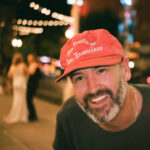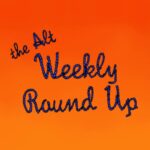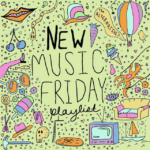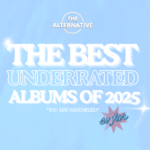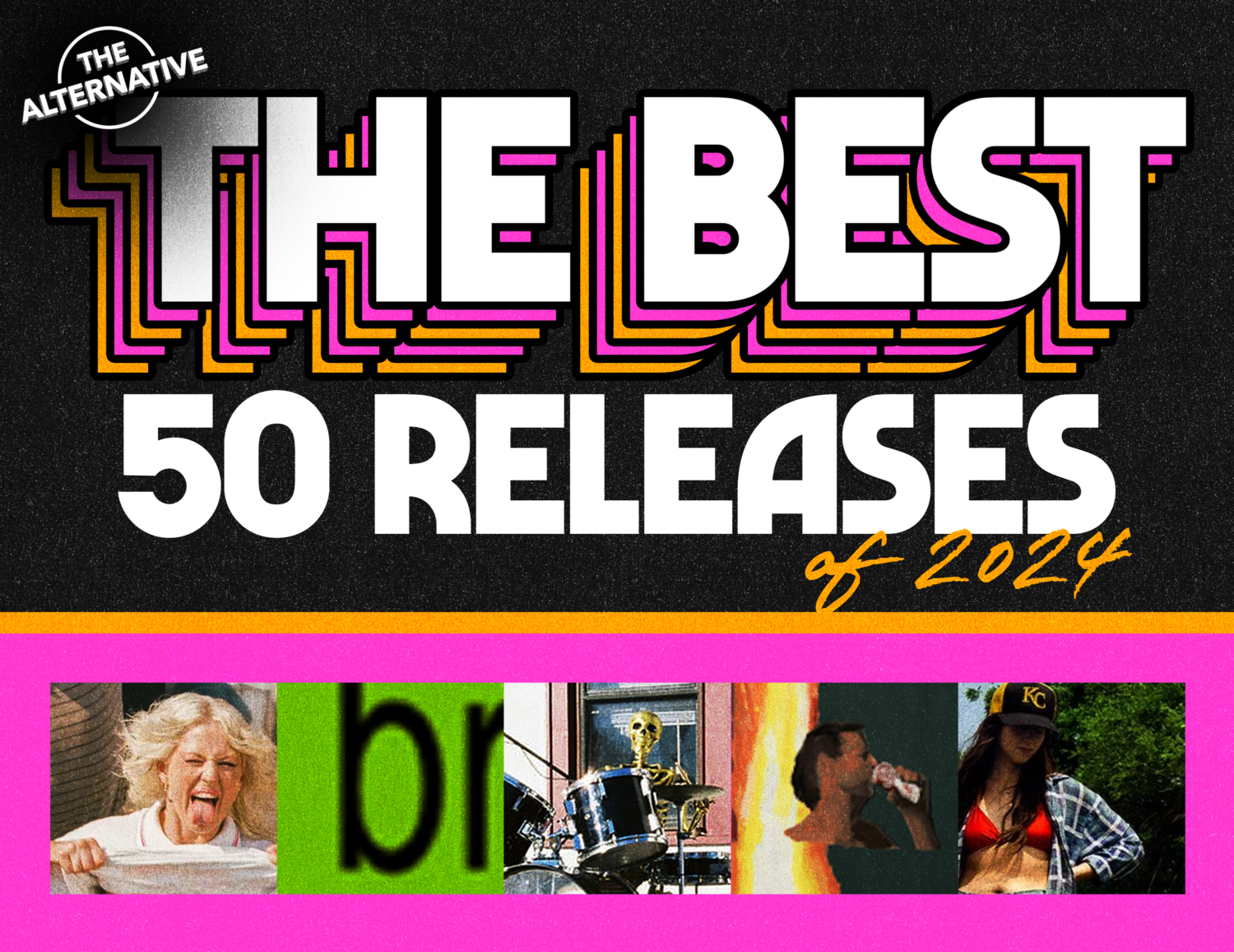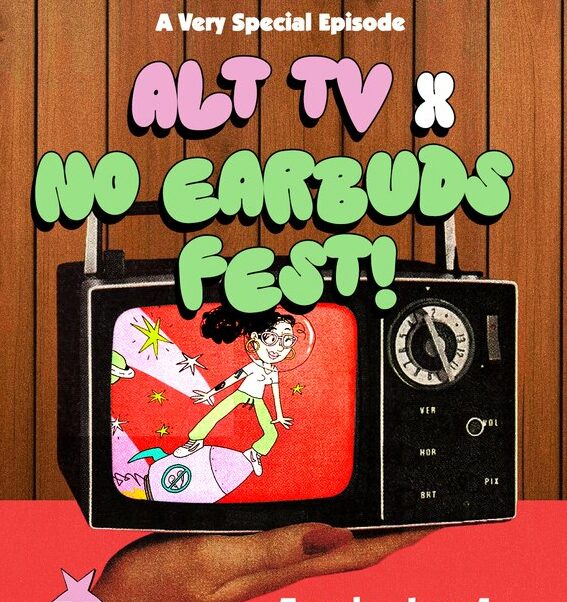Artist Interview: Braid
Posted: by The Alt Editing Staff
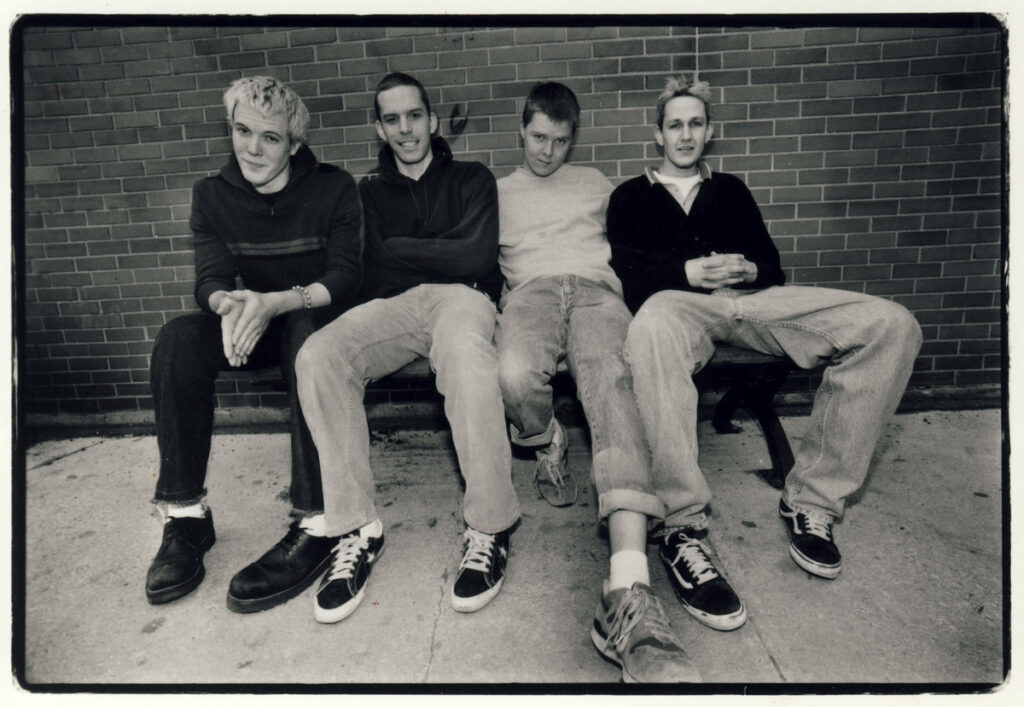
Anyone with even a passing familiarity with emo knows Frame & Canvas. In the twenty-five years since its release, it’s gained a near-mythical status in indie rock circles–and with good reason. Although any number of bands in the intervening decades have tried to replicate its energy, none have ever even come close. There’s an irreplicable quality to Braid’s then-swansong that’s helped it stand out even among the many phenomenal records the band’s contemporaries were putting out.
My own experience with Braid is inseparable from my experience with emo. “The New Nathan Detroits” was one of the first ‘real emo’ songs I ever heard (along with “Gloria” and “If It’s Here When We Get Back It’s Ours“) when I was thirteen or so and way too deep into niche internet subcultures. The frantic drumming, the seemingly uncontrollable yelped vocals from Bob Nanna and Chris Broach, the wild, unpredictable riffs–I’d never heard anything like it. And when I listened to the rest of Frame & Canvas later that day, I was struck by how distinct each song felt: “First Day Back” manages to turn a crazy math riff into a pop rock earworm; every “yeah!” in “Milwaukee Sky Rocket” sounds like a prayer; “Ariel” feels loose and almost unrehearsed–like the band managed to just strike gold in the studio; even the comparatively tame closer “I Keep a Diary” belies a confidence beyond its measured pace and droning hook. There’s a direct line from my hearing Frame & Canvas for the first time to my writing for this website. (So you know who to blame.)
I sat down with vocalist/guitarist duo Nanna and Broach, a sort of Lennon-McCartney team, to reflect on the record as it’s getting a remaster and reissue by Polyvinyl in celebration of its twenty-fifth anniversary. Read that below.
It’s twenty-five years ago, and you’re working on what’ll become Frame & Canvas. How do you anticipate people will react to it?
Bob Nanna: I think we were really proud of the songs we’d written. We’d done two albums and we took a lot of care on them, even though they were just the songs we had ready to go. We still made sure to sequence it right. We had these songs, and some were older and newer, but we had to make sure it flowed right. We weren’t expecting it to be our last album, but we were proud of how it turned out.
Chris Broach: I don’t think we went into it differently. The other albums we did, the thirty-plus songs we did as singles–we had almost unlimited time then. We worked in our friend’s studio and just said, “Hey, let’s do a song or two today.” During Age of Octeen, there’s a part that stayed on the record and Bob you were like, “I can’t do this!” It’s on “My Baby Smokes.” Bob left because he wasn’t feeling it. And we could leave and just come back whenever we wanted. We had time constraints, for sure, but we were also much more rehearsed. We’d played I think all of these songs by the time we were recording them. We weren’t testing them, necessarily, but we’d been touring nonstop so we didn’t need as much time. We also did much more pre-production. J. Robbins actually asked us for lyrics ahead of time–we’d never done that. I had just winged lyrics before in studio. I’d never had to write them out and hand them in. We’re all–and we were then–so proud, so stoked. J. was an icon, and Inner Ear is great. We’d always respected his work.
Frame & Canvas was the first record that Damon Atkinson drummed on instead of Roy Ewing, right? Did that affect the writing and recording?
BN: It didn’t affect how we wrote, but maybe how Damon played. He was a different drummer than Roy. Roy’s wild, and unique, and frenetic–he’s different. When Damon joined, we hadn’t written anything, so he learned Roy’s style. “Prize Fighter” and “Urbana’s Too Dark” were written with Roy, so Damon had to learn his parts. But when we wrote, he brought his style to it for sure. He fit in so well, so it didn’t affect how we wrote. The rest of us had been writing together so long that it just meshed.
CB: He added a bit more rock, I think. Roy had a hip-hop, jazz, that kinda style. Damon added a base to the band, maybe. We had this foundation where Roy was all over the place–in a good way!–and Damon was a big Braid fan, and that’s why he joined. He added this extra punch, I think, that felt energetic. We brought him out on tour in March ’96, maybe ’97, and Damon came in and added this level to the band we didn’t have. He’s a hard player. Roy was a little more loose, and Damon’s a hard hitter. It was different.
What do you think it is about Frame & Canvas that makes it the quintessential Braid record to so many people?
BN: I think it helps that we broke up right after. Think about American Football or Sunny Day Real Estate, At the Drive-In. They put out this album, tour, and break up and that’s the last thing you have of them. It builds momentum. And especially as the style we did got more popular, it became a little like that.
CB: I will say that doing it in one setting, one sitting, in a new location with the lens of J. producing it–I’m not surprised that’s the one that stands out. Like Bob says, it’s the pinnacle of all our work until then. Everything we learned built to there. We hit it! We were going up the hill until the end. We certainly didn’t end on a low note. We were about to peak, I think, because we’d been doing it so long–and so often. And I think, also, the songs are a little more mature. The other two records, some of those songs we never even played live, so these ones got some more time to grow.
When I talk to people about Braid, bands like Braid, Frame & Canvas is always one of the first records mentioned. People who might not know a band like Christie Front Drive tend to know Braid, and they especially know Frame & Canvas. What do you think makes this such an iconic record for its time and its place?
BN: Not to be boring, but Polyvinyl putting it out really helped. They’ve persevered to become such a big important label. When we were growing up, everything Dischord put out I needed to buy. They felt like they were curating it just for me. Christie Front Drive’s a great band, but unless Numero reissues it, giving it a legacy vibe, it’s hard to imagine. Their label wasn’t so big. Polyvinyl thriving and being an active label and actively reissuing it helped a lot.
CB: The thing that has an interesting taste is that we broke up and then we released two full CDs of fifty or whatever songs after. That helped. Polyvinyl helped that hullabaloo because we did so many posthumous releases, the live album, and then that DVD. Some of that helped because other people were making a big deal of it too. I don’t know if it was a right time thing or if it was a great album–I like it, but I think all those other things helped a lot.
What’s it like to hear all these new bands coming up who say, “I want to be just like Braid”?
CB: I’ll give a short answer: I don’t know if it’s weird or unexpected but it’s an honor. I see it, and I see people talk about it, or I’ll read a review that says, “this riff sounds like Braid,” and it’s a hair surprising, but it’s a nice surprise. And I understand it! That’s how I feel about Fugazi, about J. Robbins. Whatever they did I was buying it. I tried to emulate it. It’s interesting to be put in that category by other people, but I do get it.
BN: I find it very cool–especially seeing what the new bands do to make it different. There are so many cool bands doing something totally new with what Braid was doing.
Are there any of those new bands that Braid fans should check out? Or older bands they might not know?
CB: Bob’s the guy. He knows all the new bands.
BN: Narrow Head is very good. I like what I’ve heard of Pool Kids. Church Girls I saw at Fest and really liked. Pkew Pkew Pkew is a really fun band I saw and really enjoyed. I actually went to Fest at Gainesville and saw all these bands. Nathan from Boysetsfire is in this new band called Iron Roses and they were just incredible. The World Is a Beautiful Place, Algernon Cadwallader, those are bands I love.
CB: I was checking out Shame for a bit.
BN: Oh, yeah, they’re good.
Are there any songs on Frame & Canvas that you’re particularly proud of or excited to play?
BN: They’re all fun in their own way. Even a slow–and maybe dramatic–song like “I Keep a Diary” is fun. It’ll be a good closer. We don’t play “Clark Kent” or “Prize Fighter” a lot that will be fun to bring back.
CB: We were practicing an early song and I was like, “Why did we write this?”
BN: I know what you’re talking about. And we can’t just change it now!
CB: Some of the songs do change live, only because we do cool things live and keep it that way. “My Baby Smokes” is really different live–that one really evolved. But sometimes I feel like “this is dumb!” I don’t think that about Frame & Canvas song much, but I wan’t a good guitar player in ’94 or whenever.
If you go back to ’98 era Bob and Chris and you have all the knowledge and experience you have now, what do you tell your past selves?
CB: I’d say, “Don’t tour as much.” I don’t think we knew to give ourselves a break.
BN: As we’ve grown older, we can appreciate each others’ space and needs and boundaries. Back then we were together 24/7. We lived together for a while! I would say, “Braid’s gonna implode!” We didn’t know it was okay to take a break.
CB: We burnt the candle at both ends. We didn’t have a wick, even–it was dynamite.
If there’s anything else you think readers need to know, go for it.
CB: We’re so excited for this. We can’t wait.
Frame & Canvas (25th Anniversary Edition) is out now.
—
Zac Djamoos | @gr8whitebison
The Alternative is ad-free and 100% supported by our readers. If you’d like to help us produce more content and promote more great new music, please consider donating to our Patreon page, which also allows you to receive sweet perks like free albums and The Alternative merch.

